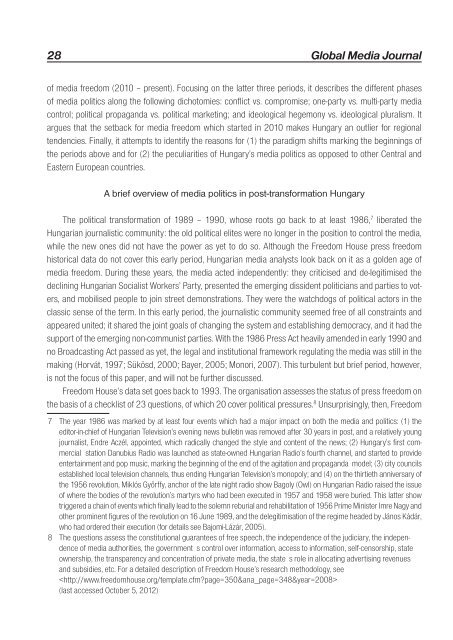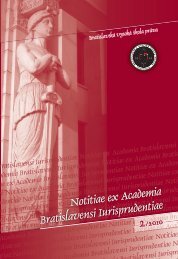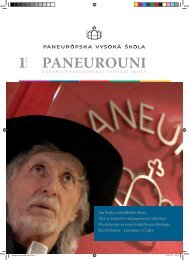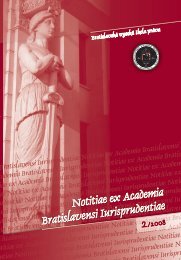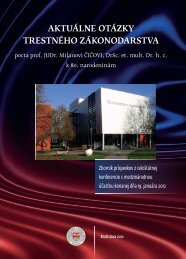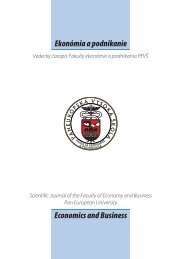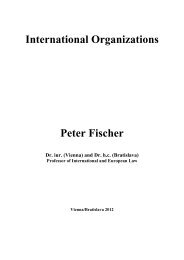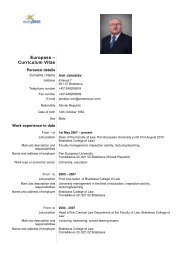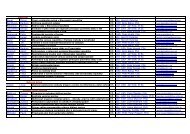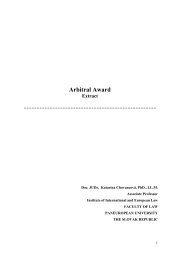ÄÃslo 1/2013 - Paneurópska vysoká Å¡kola
ÄÃslo 1/2013 - Paneurópska vysoká Å¡kola
ÄÃslo 1/2013 - Paneurópska vysoká Å¡kola
Create successful ePaper yourself
Turn your PDF publications into a flip-book with our unique Google optimized e-Paper software.
28<br />
Global Media Journal<br />
of media freedom (2010 – present). Focusing on the latter three periods, it describes the different phases<br />
of media politics along the following dichotomies: conflict vs. compromise; one-party vs. multi-party media<br />
control; political propaganda vs. political marketing; and ideological hegemony vs. ideological pluralism. It<br />
argues that the setback for media freedom which started in 2010 makes Hungary an outlier for regional<br />
tendencies. Finally, it attempts to identify the reasons for (1) the paradigm shifts marking the beginnings of<br />
the periods above and for (2) the peculiarities of Hungary’s media politics as opposed to other Central and<br />
Eastern European countries.<br />
A brief overview of media politics in post-transformation Hungary<br />
The political transformation of 1989 – 1990, whose roots go back to at least 1986, 7 liberated the<br />
Hungarian journalistic community: the old political elites were no longer in the position to control the media,<br />
while the new ones did not have the power as yet to do so. Although the Freedom House press freedom<br />
historical data do not cover this early period, Hungarian media analysts look back on it as a golden age of<br />
media freedom. During these years, the media acted independently: they criticised and de-legitimised the<br />
declining Hungarian Socialist Workers’ Party, presented the emerging dissident politicians and parties to voters,<br />
and mobilised people to join street demonstrations. They were the watchdogs of political actors in the<br />
classic sense of the term. In this early period, the journalistic community seemed free of all constraints and<br />
appeared united; it shared the joint goals of changing the system and establishing democracy, and it had the<br />
support of the emerging non-communist parties. With the 1986 Press Act heavily amended in early 1990 and<br />
no Broadcasting Act passed as yet, the legal and institutional framework regulating the media was still in the<br />
making (Horvát, 1997; Sükösd, 2000; Bayer, 2005; Monori, 2007). This turbulent but brief period, however,<br />
is not the focus of this paper, and will not be further discussed.<br />
Freedom House’s data set goes back to 1993. The organisation assesses the status of press freedom on<br />
the basis of a checklist of 23 questions, of which 20 cover political pressures. 8 Unsurprisingly, then, Freedom<br />
7 The year 1986 was marked by at least four events which had a major impact on both the media and politics: (1) the<br />
editor-in-chief of Hungarian Television’s evening news bulletin was removed after 30 years in post, and a relatively young<br />
journalist, Endre Aczél, appointed, which radically changed the style and content of the news; (2) Hungary’s first commercial<br />
station Danubius Radio was launched as state-owned Hungarian Radio’s fourth channel, and started to provide<br />
entertainment and pop music, marking the beginning of the end of the agitation and propaganda model; (3) city councils<br />
established local television channels, thus ending Hungarian Television’s monopoly; and (4) on the thirtieth anniversary of<br />
the 1956 revolution, Miklós Győrffy, anchor of the late night radio show Bagoly (Owl) on Hungarian Radio raised the issue<br />
of where the bodies of the revolution’s martyrs who had been executed in 1957 and 1958 were buried. This latter show<br />
triggered a chain of events which finally lead to the solemn reburial and rehabilitation of 1956 Prime Minister Imre Nagy and<br />
other prominent figures of the revolution on 16 June 1989, and the delegitimisation of the regime headed by János Kádár,<br />
who had ordered their execution (for details see Bajomi-Lázár, 2005).<br />
8 The questions assess the constitutional guarantees of free speech, the independence of the judiciary, the independence<br />
of media authorities, the government s control over information, access to information, self-censorship, state<br />
ownership, the transparency and concentration of private media, the state s role in allocating advertising revenues<br />
and subsidies, etc. For a detailed description of Freedom House’s research methodology, see<br />
<br />
(last accessed October 5, 2012)<br />
GMJ Book.indb 28 21.1.<strong>2013</strong> 9:44


